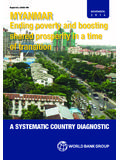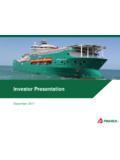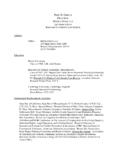Transcription of EU KLEMS Growth and Productivity Accounts 2017 …
1 EU KLEMS Growth and Productivity Accounts 2017 release , statistical Module1 Prepared by Kirsten J ger (The Conference Board) Introduction This document describes a new release of EU KLEMS Productivity and Growth Accounts ( 2017 ) with data based on the NACE 2 industry classification and the new European System of National Accounts (ESA 2010) up to 2015 for all 28 member states of the European Union, as well several EU aggregates (including the Euro Area), and the United States. This release is the second in a series of two (2016 and 2017 ), which have been carried out with funding from the European Commission, DG for Economic and Financial Affairs. The 2016 and 2017 EU KLEMS releases follow up on earlier rolling releases in 2012 which showed detailed Growth Accounts up to 2009-2012 depending on the country.
2 The 2017 extends the 2016 release which was for 10 major European economies (Austria, Belgium, Germany, Finland, France, Italy, Netherlands, Spain, Sweden, and United Kingdom) with Growth Accounts another two countries with full Growth Accounts (Czech Republic and Denmark). All Growth Accounts are based on the computations of capital and labour contribution to value added as well as total factor productivity2, as well as output and labour Productivity estimates for all 28 EU member states. The 2017 EU KLEMS databases retains the standard EU KLEMS structure of previous rounds, where variables are broken down into values, prices, volumes, and additional variables. For more detailed information on the general Growth accounting methodology and construction of the database, see O Mahony and Timmer (2009).
3 1 This release of the EU KLEMS database is funded by the European Commission, Directorate General Economic and Financial Affairs under the service contract ECFIN-163-2015 Any errors or omissions are entirely the responsibility of the Conference Board. I am grateful to my Conference Board colleagues, Abdul Azeez Erumban, Oliver Henrich, Frank Steemers, Klaas de Vries, and Bart van Ark for their support at various stages in the process. I also thanks Antonio F. Amores, Bernd G rzig, Chantal Kegels, Martin Gornig, and Laurence Nayman for their advice. A number of systematic cross checks on preliminary versions of the database have been performed by Matilde Mas and Reitze Gouma. Our special gratitude goes to Reitze Gouma and Marcel P.
4 Timmer for their support to transfer EU KLEMS to The Conference Board and to Ana Rincon-Aznar and Mary O Mahony for the provision of data from the EU Labour Force Surveys. For comments and suggestions please send an email to 2 The full KLEMS approach, using gross output and all five major input factors (K-L-E-M-S) is only available for the United States with the 2017 release . The full KLEMS approach is currently not applicable for all European countries with gross output and intermediate input deflators by industry being the main bottleneck. 2 The 2017 release has a number of features worth noting, which are explained in this document in more detail: Concepts and methodologies to calculate the various Growth and Productivity variables were adjusted to the new European System of National Accounts (ESA 2010).
5 The time period coverage is 1995-2015 for most countries and industries. The data on output, value added and employment is nearly fully consistent with Eurostat at the corresponding industry levels - if not mentioned otherwise in the country notes. The data on gross fixed capital formation, prices, and capital stocks is consistent with Eurostat at the corresponding industry levels - if not mentioned otherwise in the country notes. The capital asset types were modified and extended according to the ESA 2010 requirements. One important deviation from previous EU KLEMS releases (prior to 2016) is that capital stock figures are mostly obtained from Eurostat, and are thus consistent with national Accounts assumptions on the measurement of capital stock - if not mentioned otherwise in the country notes.
6 The computation of capital services, which are an essential part of a harmonized KLEMS database, require clarification of assumptions regarding depreciation rates and the calculation of the rates of return. As capital services are not part of the official System of National Accounts those assumptions are not harmonized in the official data. While we retained the implicit depreciation rates from the official data, we systematically applied geometric depreciation rates, as in previous EU KLEMS versions. Therefore the measures of capital stock are not fully consistent with our applied measures of rates of return, rental prices and consequently capital services. While this adjustment is somewhat affecting the comparability of the series across countries, the results in this release (as well as the 2016 release ) are more in line with the official national Accounts estimates of underlying variables.
7 Hence we refer to those releases as a statistical module of EU KLEMS , which are therefore not directly comparable to the analytical module as developed for earlier releases. Output files of the 2017 release comprise a further breakdown of capital services into ICT capital services and non-ICT capital services. For constructing labour services for the period 2008-2015, the micro-data underlying the European Labour Force Survey (LFS) has been used through the National Institute of Economic and Social Research (NIESR). Years prior 2008 have been extrapolated using the trend in labour services from former versions of EU KLEMS . Table A1 in the appendix lists all variables of the output and capital files, broken down into values, prices, volumes, and additional variables. Variables will be available to the extent possible as laid out in table A1 in O Mahony and Timmer (2009) which largely correspond to the set of variables published in the first full release of the EUKLEMS database in March 2008.
8 The 2017 release provides Growth Accounts across countries and industries where possible (see table 1). Contributions to Growth rates of value added and labour Productivity are calculated, with the latter measured in two ways value added per hour worked and value added per person employed. 3 Table 1: Growth accounting approaches of the EU KLEMS release EU KLEMS Approaches: Contributions 1) LP2: Value Added / Person Employed VA/EMP Minimum approach 2) LP1: Value Added / Hour worked VA/H_EMP 3) Value Added and KL Inputs VA 4) Gross Output and KLEMS Inputs (only US) GO Maximum approach Figure 1 shows the availability of Growth accounting data for all the countries of the 2017 release . It was possible to calculate Growth Accounts for 12 of the 15 EU-15 countries, 4 of the EU-13 countries, the United States, and 2 EU aggregates within this release .
9 Figure 1: Contributions to VA Growth , LP1 Growth , LP2 Growth , and GO Growth by country and year Note: VA=value added, LP1= value added per hour worked, LP2= value added per person employed, GO=gross output 1980198119821983198419851986198719881989 1990199119921993199419951996199719981999 2000200120022003200420052006200720082009 201020112012201320142015EU-15 (VA, LP1, LP2)Aus tri aBel gi umDenmarkFi nl andFranceGermanyItal yLuxembourgNetherl andsSpai nSwedenUni ted Ki ngdomEU-13 (VA, LP1, LP2)Czech Republ i cLatvi aSl ovaki aSl oveni aEU Aggregates (VA, LP1, LP2)EU-12EU-16 Non-EUUS VA and LP1US LP2US GONo Growth Accounts EU-15: Greece, Irel and, PortugalNo Growth Accounts EU-13: Bul gari a, Croati a, Cyprus , Es toni a, Hungary, Li thuani a, Mal ta, Pol and, Romani a 4 The remainder of this document details the structure of the 2017 EU KLEMS database and general methods applied to this release .
10 The main differences between the former EU KLEMS releases and the 2016 and 2017 release are briefly highlighted. Additionally, this section covers the methods applied for the calculation of labour services. Industry Classification European National statistical Institutes (NSIs) produce data based on the NACE 2 industry classification, which is consistent with the international standardized ISIC Revision 4 industry classification. We distinguish between 34 industries plus 8 aggregates as shown in table 2. The United States is also released in accordance with this industry classification (ISIC Rev. 4/NACE Rev 2) and is therefore not fully in accordance with the North American Industry Classification System (NAICS). The NACE 2 output and labour data used in this release are based on Eurostat insofar available.







